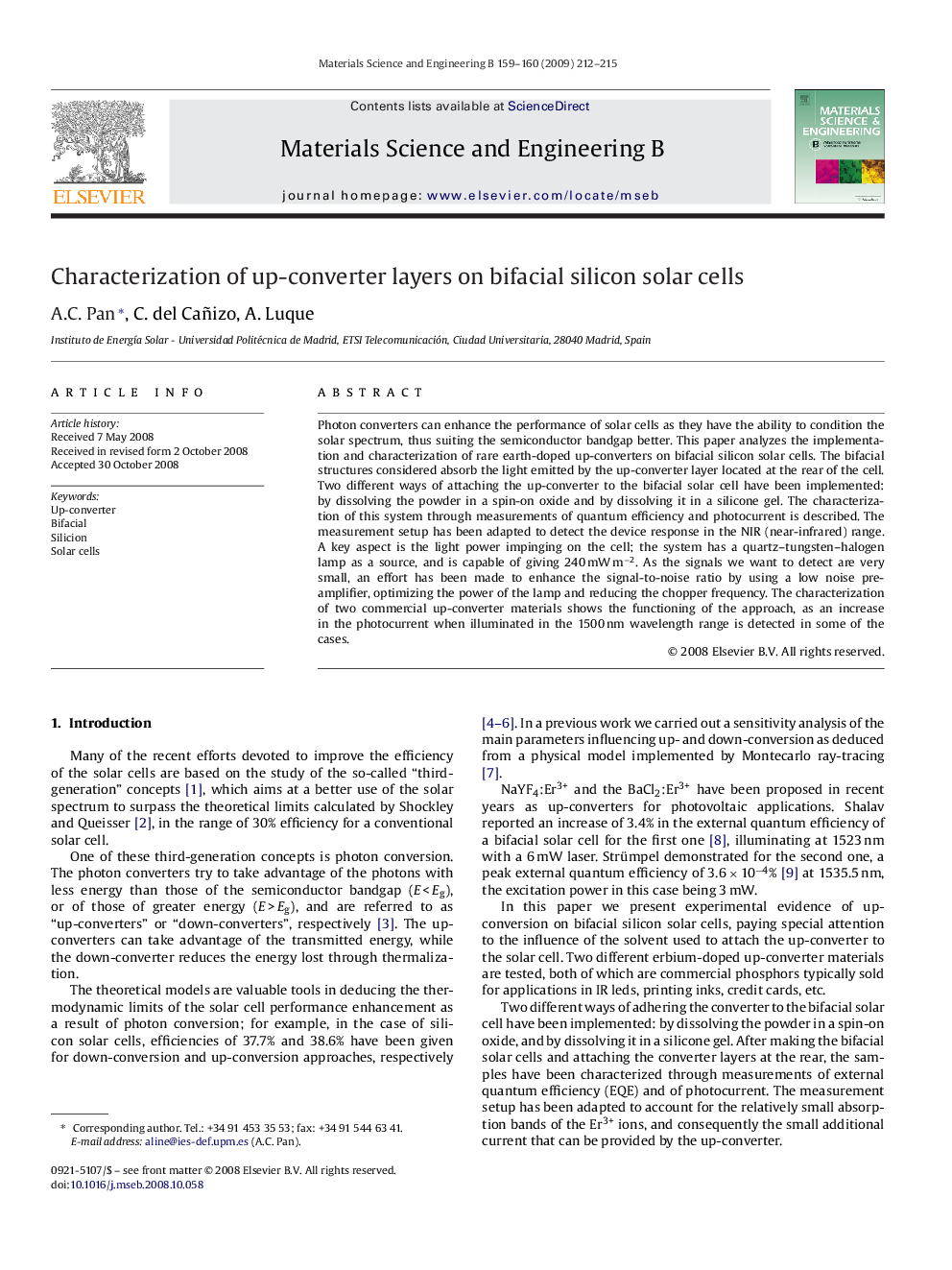| Article ID | Journal | Published Year | Pages | File Type |
|---|---|---|---|---|
| 1530666 | Materials Science and Engineering: B | 2009 | 4 Pages |
Photon converters can enhance the performance of solar cells as they have the ability to condition the solar spectrum, thus suiting the semiconductor bandgap better. This paper analyzes the implementation and characterization of rare earth-doped up-converters on bifacial silicon solar cells. The bifacial structures considered absorb the light emitted by the up-converter layer located at the rear of the cell. Two different ways of attaching the up-converter to the bifacial solar cell have been implemented: by dissolving the powder in a spin-on oxide and by dissolving it in a silicone gel. The characterization of this system through measurements of quantum efficiency and photocurrent is described. The measurement setup has been adapted to detect the device response in the NIR (near-infrared) range. A key aspect is the light power impinging on the cell; the system has a quartz–tungsten–halogen lamp as a source, and is capable of giving 240 mW m−2. As the signals we want to detect are very small, an effort has been made to enhance the signal-to-noise ratio by using a low noise pre-amplifier, optimizing the power of the lamp and reducing the chopper frequency. The characterization of two commercial up-converter materials shows the functioning of the approach, as an increase in the photocurrent when illuminated in the 1500 nm wavelength range is detected in some of the cases.
